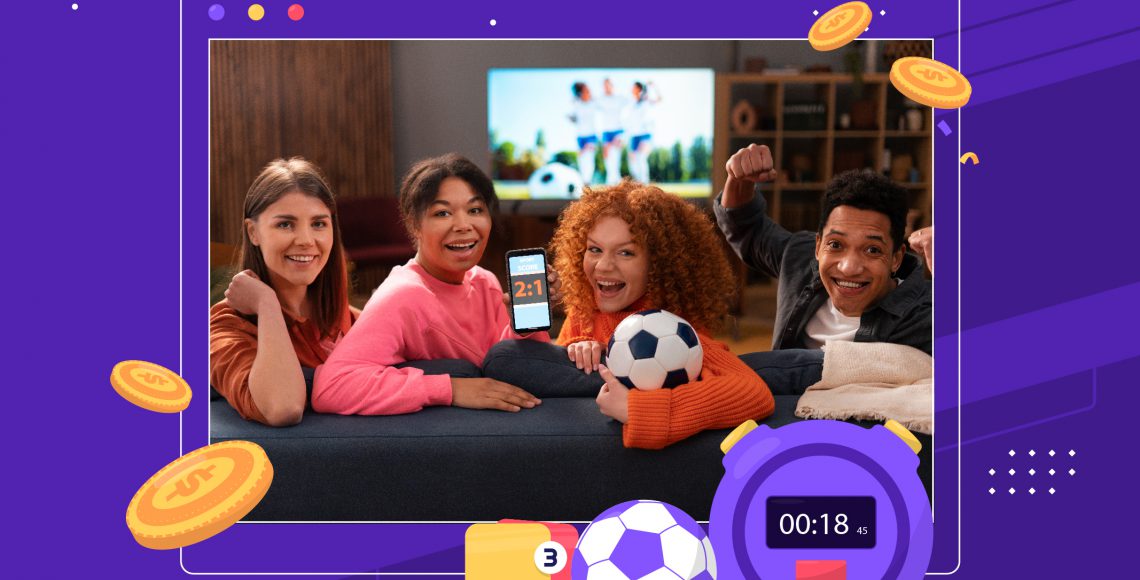Social Media strategies for Sports Betting
It’s impossible to overstate the importance of social media in today’s online world. Social media platforms, from text-based sites like X to image and video sharing platforms like TikTok and Instagram, allow people from all over the world to communicate and share ideas. Social media marketing is now vital for the majority of companies, such as in the case of iGaming marketing.
4 minutes – read

Create a Social Media marketing strategy
There are many ways you can use social media to promote your iGaming services. You can make posts, buy ad space, and partner with social media influencers who will promote your site in exchange for sponsorship deals. Social media gives you the ideal platform to create buzz around a new game or a special offer. To be effective, however, you need a strategy for your social media marketing.
Developing an effective social media marketing strategy isn’t as easy as it looks. First of all, you need to tailor your strategy for each individual platform. Different platforms favour different kinds of media — some are perfect for short text posts, others for video clips, and others are better for images or long-form text.
You also need to consider the demographic: TikTok’s audience is younger, for example, while Generation X prefers Facebook. Different audiences will respond to different content. You need to think about the people playing your games now, the new markets that you want to reach, and how you can capture their attention.

A social media strategy must comply with various rules and regulations. First, you need to consider the terms of service of every platform where your marketing content will appear. Some platforms are very strict about the kind of promotion that they allow and the services you’re allowed to sell.
Because iGaming involves gambling, you need to be careful not to fall foul of anti-gambling rules when you post. You also need to be aware of the rules around sponsored content: some platforms insist that posts from sponsored influencers are appropriately tagged as such.
You must also be careful to comply with the laws and regulations of the regions where your content will appear. Many countries have stringent rules about content related to iGaming marketing, especially if it will be seen by minors and young adults.
Of course, you need to show your commitment to responsible gaming. Crafting the perfect online gaming marketing strategy only to have it shut down for contravening regulations would be frustrating. Make sure you’re familiar with any applicable restrictions before you start.
iGaming services and online reputation for customers
In the iGaming industry, your reputation is crucial. Your customers need to know they can trust you with their money as well as provide a great gaming experience. Social media marketing can help here. A robust social media strategy helps to build your brand and develop a positive reputation.
Your social media team should foster positive interactions with customers and monitor discussions around your services. If someone posts about positive experiences with your games, a reply thanking them for their support is a good idea. It shows you’re engaged and that you care about your players.

On the other hand, receiving negative feedback via social media is not pleasant. Make sure your team understands the importance of dealing appropriately with bad reviews and other criticism online. Negative comments shouldn’t simply be deleted or ignored. A prompt and polite response offering to help resolve the issue will create a much more positive impression.
Interacting with your players can only benefit your company. Social media offers a rich mine of information on your users’ sports betting preferences and interests. This kind of public and direct interaction, handled properly, can be a powerful tool for boosting your image. You can create instant buzz around your latest games and new offers, as well as receive valuable feedback on what players think and what they’d like to see.
Sports betting social media and professional translations
Another aspect of an effective online gaming marketing campaign is localisation. If you want a social media campaign with maximum impact, people in different regions need to be able to understand it. Translating your iGaming marketing content into different languages helps you to reach new markets.
Apart from the languages themselves, there are cultural differences and preferences that your marketing strategy needs to take into account. Knowing about things like local holidays, top sports teams and celebrities in a particular region can make your marketing more exciting and engaging.

That’s where 1StopTranslations comes in. We provide top-quality professional translations for the iGaming industry. Get in touch today to find out how we can help you with your online gaming marketing materials.
Need a quote? Click here







